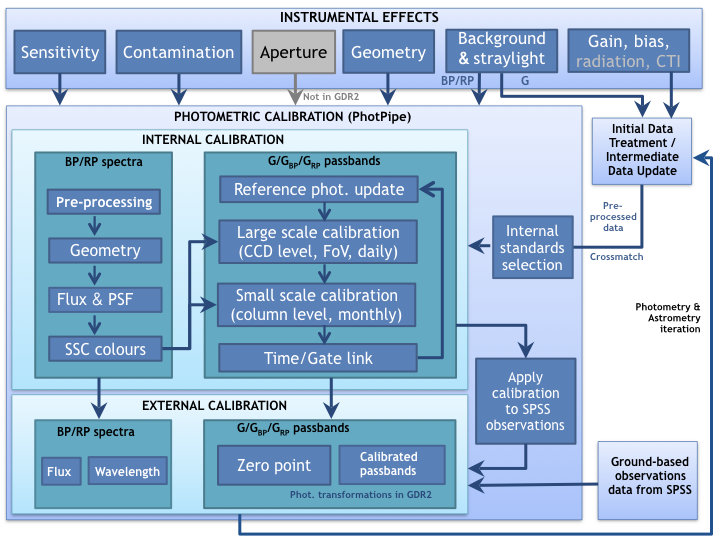5.1.1 Overview
Author(s): Dafydd W. Evans
The photometry as presented in Gaia DR2 differs significantly from what was produced for Gaia DR1. The main reason for this is in the data available for the system definition: in Gaia DR1 this was affected by contaminated mirrors, which changed the target passband, while for Gaia DR2 a very much cleaner set of data could be used, representing a system much closer to the expected passband. In addition, in Gaia DR2 there have been considerable improvements in the processing algorithms that allowed further refinements of the final photometric results. In Gaia DR2 we also, for the first time, present integrated magnitudes for the dispersion spectra, which are referred to as and .
The improvements can further be attributed to the use of better calibrations and models. A better attitude model, for example, allowed the use of more accurate predicted positions instead of the extrapolated ones used in Gaia DR1 (see Section 5.2.1). An improved PSF/LSF model enabled a better Image Parameter Determination (see Section 2.3.2) and a refined cross-match algorithm (see Section 2.4.9) resulted in a cleaner source catalogue and a better deletion of detection artefacts. Finally, a more robust accumulation of the epoch photometric measurements was carried out with a better outlier rejection, prompted by a careful statistical analysis, and this approach led to the creation of a more reliable mean source photometry (see Section 5.3.5).
A direct comparison of the distribution of the uncertainties between the two catalogues is presented in Section 5.5.1.
Figure 5.1 from Carrasco et al. (2016), updated for Gaia DR2, shows an overview of the photometric processing, the elements of which are further described in the following sections.
